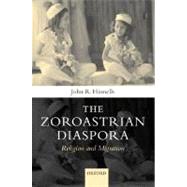Zoroastrians Diaspora Religion and Migration
, by Hinnells, John R.- ISBN: 9780198267591 | 0198267592
- Cover: Hardcover
- Copyright: 7/7/2005
What is the distinctive Zoroastrian experience, and what is the common diasporic experience? The Zoroastrian Diaspora is the outcome of twenty years of research and of archival and fieldwork in eleven countries, involving approximately 250,000 miles of travel. It has also involved a surveyquestionnaire in eight countries, yielding over 1,840 responses.This is the first book to attempt a global comparison of Diaspora groups in six continents. Little has been written about Zoroastrian communities as far apart as China, East Africa, Europe, America, and Australia or on Parsis in Mumbai post-Independence. Each chapter is based on unused originalsources ranging from nineteenth century archives to contemporary newsletters. The book also includes studies of Zoroastrians on the Internet, audio-visual resources, and the modern development of Parsi novels in English.As well as studying the Zoroastrians for their own inherent importance, this book contextualizes the Zoroastrian migrations within contemporary debates on Diaspora studies. John R. Hinnells examines what it is like to be a religious Asian in Los Angeles or London, Sydney or Hong Kong. Moreover, heexplores not only how experience differs from one country to another, but also the differences between cities in the same country, for example, Chicago and Houston. The survey data is used firstly to consider the distinguishing demographic features of the Zoroastrian communities in variouscountries; and secondly to analyse different patterns of assimilation between different groups: men and women and according to the level and type of education. Comparisons are also drawn between people from rural and urban backgrounds; and between generations in religious beliefs and practices,including the preservation of secular culture.






